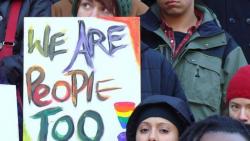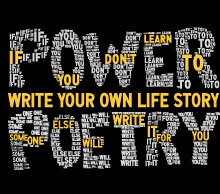
LGBTQ stands for: lesbian, gay, bisexual, transgender, and queer. This acronym refers to a person’s sexual orientation and gender identity. There is a long history of LGBTQIA+ community-building and activism in the U.S. and beyond. But even though much progress has been made, some LGBTQIA+ individuals continue to be victims of bullying and violence. Read on to learn more about sexual orientation and gender identity and how you can support equality by doing what you do best: writing about it!
- Sexual orientation vs. gender identity. Sexual orientation is an individual’s physical and/or emotional attraction to another person, while gender identity is part of one's personal identity and is not always correlated with someone's sex assigned at birth.
- LGBTQIA+ identity is complicated. Not all people who fall under the LGBTQIA+ umbrella openly identify as LGBTQIA+. For some, class, race and religion may impact their ability to "come out" and teens may be forced to leave their families because they love people of the same sex or gender. 40% of homeless teens in the U.S. identify as LGBTQ. And in some countries, identifying as LGBTQiA+ is considered a crime--but that doesn’t stop people from standing up for equality.
- Heterosexism and homophobia. Heterosexism is the belief that heterosexuality is the only “normal” sexual orientation, and is often accompanied by homophobia, an internalized and expressed "fear" of homosexuality through negative feelings about LGBTQ people. These forms of discrimination prevent the possibility of creating safe environments for everyone.
- LGBTQIA+ History. The LGBTQIA+ community has a long and rich history full of amazing people like Walt Whitman, Oscar Wilde, Gladys Bentley, Audre Lorde, Billie Jean King, Gloria Anzaldua, Harvey Milk, Willa Cather, Bayard Rustin and Tammy Baldwin. Some important events in LGBTQIA+ history include the Stonewall Riots, the election of Harvey Milk and the overturning of Don’t Ask, Don’t Tell.
- Challenges. LGBTQIA+ and non gender-conforming youth often face challenges at school and home. You should know there are trusted adults you can turn to, and organizations who can help (see below). Some individuals face the difficult question of whether to “come out”; this is the process of understanding, accepting, and valuing your own sexual orientation and/or gender identity.
- What’s an ally to do? Allies are people who support the LGBTQiA+ community. Even if you yourself don’t identify as LGBTQIA+, you can help by supporting LGBTQIA+ people by creating or joining a safe space at your school or in your community. There are events that occur during the year where you can show your support for the LGBTQiA+ community. You can also talk back when you hear heterosexist or homophobic comments. But what’s the most important thing for allies to do? Make sure you treat your LGBTQIA+ friends like the normal people they are.
- Power Poetry. Take action by writing about historical and contemporary issues that impact LGBTQIA+ folks. Give a presentation in history class about a famous figure in LGBTQiA+ history. Encourage your teachers and school staff to distribute LGBTQIA+ affirming materials. Make your online and offline communities places where everyone can safely accept and be themselves. And know that schools have a responsibility to protect you--even at home--so if you’re being treated unfairly, or if you see someone being bullied, make sure to speak out!
Non-profits
FIERCE
It Gets Better Project
American Civil Liberties Union
Gay Straight Alliance Network
The Trevor Project
